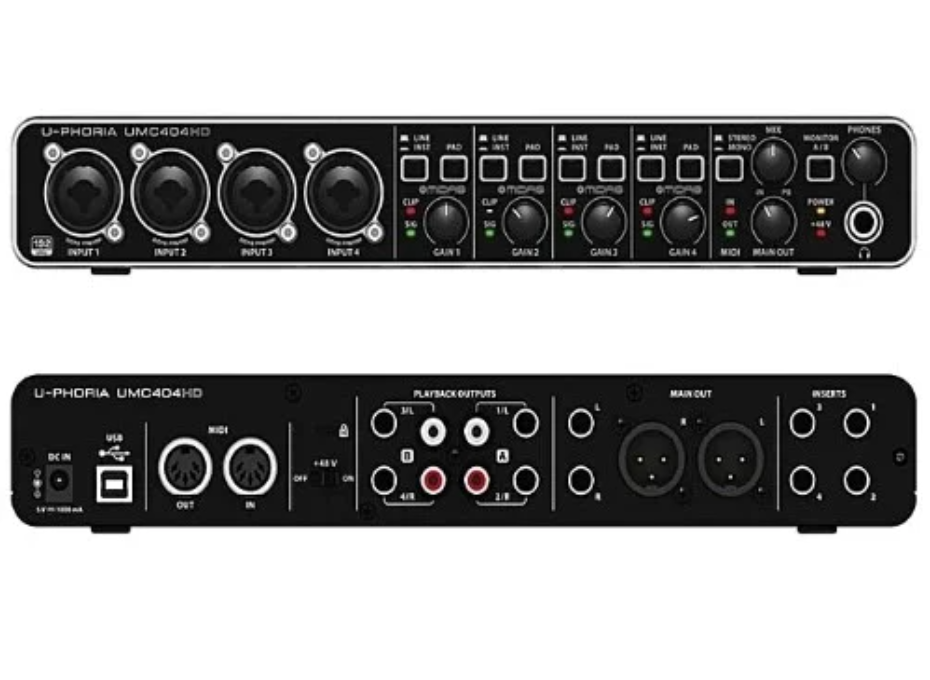
The Behringer UMC404HD is a robust 4‑in / 4‑out USB audio/MIDI interface designed for home studios, recording setups, and project environments where multiple mic or instrument inputs and flexible output routing are needed. It supports high‑resolution audio recording at 24‑bit / 192 kHz, delivering professional‑level fidelity for vocals, instruments, and overall production.
Each of the four front‑panel channels features a combo XLR/¼″ TRS jack capable of handling microphones (with +48 V phantom power), line‑level signals, or Hi‑Z instrument signals. These channels include pad switches to manage high‑level signals and LED indicators to display signal presence and clipping.
On the output side, the interface provides balanced main outputs (XLR and TRS), additional line outputs (TRS and RCA), and a dedicated headphone output with its own level control. Four instrument‑insert points are included to allow external gear like compressors or EQs to be inserted in‑line for each channel.
A key feature is the zero‑latency direct monitoring capability, enabling performers to hear their live input signal in real time with no noticeable delay—crucial for recording or live performance. The unit is built in a rugged metal chassis that withstands repeated use and transport.
Additional features include MIDI In/Out (5‑pin DIN), USB 2.0 connectivity to computers, and full compatibility with both Mac and Windows platforms. While USB‑powered for convenience, a dedicated power supply is often included or recommended especially when using multiple phantom‑powered mics.
In practical terms, the UMC404HD is well‑suited for multi‑microphone tracking (for example a band or multi‑participant podcast), mid‑sized studio use, or as a central audio hub for live desktops. Its combination of four high‑quality preamps, professional I/O, high sample‑rate support and flexible routing offers excellent value.
In summary: the Behringer UMC404HD offers a powerful, multi‑input USB audio interface with studio‑grade features — a strong option for anyone looking to step up from simpler two‑input models.